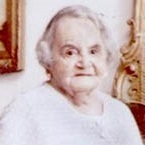|
He was born on March 18, 1928 in the city of Juan Bautista Alberdi (Province of Buenos Aires). He graduated as a teacher at the Normal School Nicasio Oroño, Villa Constitución and as a Licentiate for Consular Service at the Faculty of Economic, Commercial and Political Sciences of Rosario (Santa Fe) .-
He developed for 30 years, in Channel 3 of Television of Rosario, a weekly exhibition on Argentine History and Universal Literature. It was part of the origins and projection of the Medical Sciences Foundation together with Rafael M. Pineda and Hugo Tanno, who invited him to participate in it. He is the author of the books "Rehearsing Essays" and "Reflections in Time". Lecturer in the Hall of Lost Steps of the National Congress, at the 150th anniversary of the city of Rosario. Distinctions: For Province of San Luis: by the Foundation for the Argentine Development - Funding - in express recognition for making arrive the lasting echo of its verb to the land puntana. Year 2004 For the Argentine Group of the Oratory (G.A.O.): with the "Demosthenes of Gold" and also with the "Magazine of the Bicentennial of the May Revolution". Also, the GAO distinguished with Dr. Carlos Alberto Loprete, of the city of Buenos Aires, with the title of "Masters of Culture". Year 2008 For the Municipal Council of Rosario: declaring him "Writer and Distinguished Journalist" of the city. Year 2009 For his trajectory and legacy to the Santa Fe culture, for the Vice Governor of the province of Santa Fe. Year 2013 For the Medical Sciences Foundation of Rosario. Year 2014 "Crystal Monument" in the Gallery of the American Flags as a tribute to his permanent exaltation of the symbolism of the National Monument to the Flag. Medal commemorative of the "Gral. Manuel Belgrano ", from the descendant (chozno) of the hero Manuel Belgrano, in a public ceremony held at the National Monument to the Flag. He was invited by the Sanmartiniana Association to integrate the Cross of the Andes on mule back, granting him the honor of discovering the plaque allusive to the Bicentennial of the May Revolution in the Cristo Redentor, more than 3000 meters above sea level . He is part of the Culture Committee of the Medical Circle. He was a regular contributor to the newspapers "La Capital" and "El Ciudadano", as well as the "Rosario Magazine". Professor of "Sociology and Political Science" at Instituto Superior Técnico No. 18, "Theory of Information and Communication" at the Faculty of Law and Political Sciences of the National University of Rosario, "Civic Instruction" at the School of Police of Rosario, and of "Journalistic Ethics", in the School of Journalism of the Press Circle of the same city. 2010 - 2013 presided over the Rosario History Board, held the position of Vice President until 2014. He developed a permanent activity of dialogue and interviews with personalities of culture, history and academies, such as Jorge Luis Borges, Ernesto Sábato, Mario Vargas Llosa, María Esther de Miguel, Marcos Aguinis, José Ignacio García Hamilton, Juan José Sebreli, Silvina Bullrich, Tomás Eloy Martínez, Federico Andahazi, Bernardo Ezequiel Koremblit, Mariano Grondona, Jaime Barylko, Julián Marías, Angelica Gorodischer, among others.
0 Comentarios
María Antonia Astengo de Barrutia, born in the early 1900's, belonged to a high-class family of her time. Daughter of Enrique Juan Astengo and Antonia Saint Marie, together with his 6 brothers lived all their existence in Rosario, city that learned to love from his earliest age. Member of a family group that gave to their city everything that they harvested in life, as attested by Hogar Astengo de Alvear, Santa Fe province, Teatro Astengo de Rosario, generous contributions for the development of the theater the Circle , The lamentably lost Columbus Theater, the remodeling of the Spanish Hospital, a great contribution for the Argentine Library, as well as numerous foundations and charitable works of the city, and a collection of European paintings that increased the cultural heritage of the Museo Castagnino. For the Centennial Hospital, where, through the management of the Medical Sciences Foundation of Rosario, he built, developed and equipped the Day Hospital of this institution, now a relevant public assistance service in the city.
In his handwritten words he expressed for this last donation that "this work that I offer is in memory of my father, in homage to the people of Rosario, in them I thought when I made the decision to offer them this Service ..." |

